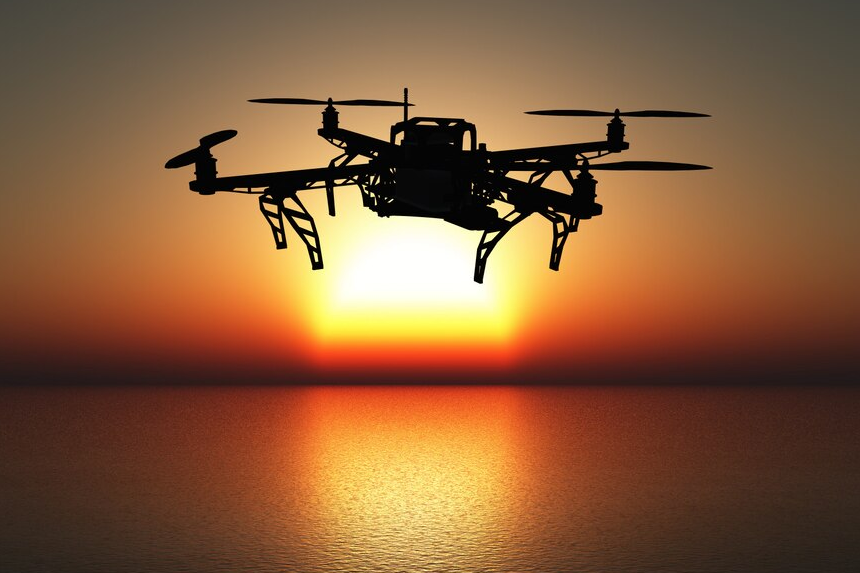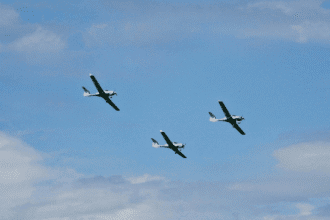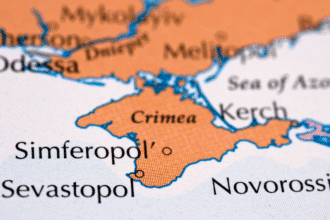Early on, on what was supposed to be an ordinary evening, Maria Troyanivska returned home. But as her mother, Viktoria, remembers through tears, a Russian Shahid drone broke through the peace and landed squarely on her daughter’s suburban Kyiv apartment window.
- How Are Ukrainian Defenses Coping with the Surge in Drone Attacks?
- Why Are Shahid Drones the Weapon of Choice for Russia?
- What Is Life Like for Ukrainians Facing Nightly Drone Strikes?
- How Are Ukraine's Soldiers Adapting to the Intensifying Drone Threat?
- How Are Families and Loved Ones Enduring the Human Cost of Drone Attacks?
“It flew in through the window, right into her room,” Viktoria reports. Maria’s parents hurried from the next room only to see their 14-year-old daughter’s bedroom ablaze in flames as the impact rocked their house.
Intensifying Tensions: Why Are Ukraine-Russia Drone Attacks Escalating?
“We tried to put it out, but everything was burning so furiously, ” Viktoria says, her voice breaking. Breathing was difficult; we had to leave. The family’s frantic effort to save Maria was fruitless. The explosion killed her right away; then she burned beyond identification.
Her mother agonizes, “She died immediately and then burned.” “We had to lay her in a closed coffin. She stood no prospect of survival.
How Are Ukrainian Defenses Coping with the Surge in Drone Attacks?
Maria’s death night highlights the terrible reality that Ukrainians live with every Day as Russia mounts more drone attacks on their country. General staff of Ukraine claims that October alone saw over 2,000 drone launches—a record number since the start of the war. Far above the numbers of past months, 818 drones were shot in August and 1,410 in September in the months preceding this.
The attacks fit what Ukraine sees as a more general comeback by Russian forces. Supported by the claimed arrival of North Korean soldiers entering Russia’s ranks, Moscow’s troops are pushing along several front lines. And with Donald Trump re-elected as the next U.S. president, weary and resource-starved Ukraine’s army is confronting an uncertain future with maybe less backing from its most crucial military friend.
Why Are Shahid Drones the Weapon of Choice for Russia?
Most drones Russia launches are Shaheds, propeller-driven vehicles with a distinctive wing form and a lethal warhead in the nose cone. Initially built in Iran, these less expensive drones than missiles are a preferred weapon for Russia’s high-frequency strikes. Moscow has even started sending “dummy” drones, made without explosive payloads, to disorient Ukrainian air defense systems and force them to squander valuable ammonites.
Shahid drones are less expensive to manufacture, more easily deployable than conventional missiles, and strategically designed to drain Ukraine’s defenses and morale.
We have so far been intercepting them. Sgt Mykhailo Shamanov, a Kyiv city military administration spokesman, said, “I hope we will keep intercepting them.” He notes that although Russian forces certainly have military targets in mind, their overall objective is “terrorizing citizens.”
What Is Life Like for Ukrainians Facing Nightly Drone Strikes?
For Ukrainians, evening now usually connotes anxiety. Every nightfall, people get ready, and phones alert them of oncoming drones ringing. Across the country, sirens call another night of uncertainty and fear. They wake early to learn of fresh drone strikes that have shaken Kyiv, Kharkiv, Odessa, Mykolaiv, and Zaporizhzhya.
President Volodymyr Zelensky claims that Russia sent an unheard-of 145 drones to Ukraine in one Day on a recent Sunday. Of those, Ukraine reportedly shot down 62 while another 67 vanished from radar, most likely from electronic warfare.
The mounting assaults are taxing Ukrainian air defenses. “Drone or missile waste falls on the city even if air defense performs effectively. Sgt Shamanov says it starts fires, damages things, and sadly occasionally results in victims. Every night, it’s a lottery where it hits, where it’s shot down, where it lands, and what occurs.
How Are Ukraine's Soldiers Adapting to the Intensifying Drone Threat?
Vitaliy and his guys are among those first-line fighters armed with transportable anti-drone equipment installed on the rear of a flatbed truck. Their task is to locate, move fast, and intercept the Shahid drones before they reach inhabited areas. He says we try to track, move, outpace, and destroy the drone.
Still, the relentless assault is wearing on us. “There were 50 drones a month half a year ago. Vitaliy claims the count exceeds 100 drones per night and describes the psychological and physical strain involved. Russian missile attacks in the early phases of the war would set six-hour air alerts; today, drone alarms run twelve or even thirteen hours every night.
Despite the difficulty, Vitaliy presents a confident front before his men, sure that he can handle whatever Russia throws at them with enough weapons from Western partners. “Our guys could even cope with 250 drones in a night,” he says.
How Are Families and Loved Ones Enduring the Human Cost of Drone Attacks?
The human cost of these unrelenting attacks is shockingly clear for Viktoria and Volodymyr, who must now negotiate life without their daughter Maria. Their house was wrecked, and they are now living with a friend and sleeping in a corridor at night for cover from the continuous drone strikes.
Of course, Viktoria acknowledges, it’s taxing. But it infuriates and frustrates people much more. People truly cannot grasp, especially in recent times, so those attacks on tranquil homes are complicated.
Grappling with the loss of his child and the senselessness of the conflict, Volodymyr expresses the feelings of many Ukrainians. “I have no idea at all why this war started or for what,” he says. “What sense does it make?” Not from an economic standpoint or a human, territorial one; people die.
The fate of families throughout Ukraine becomes more uncertain as drone strikes become a continual hazard. “It’s just some ambitions of sick people,” Volodymyr says, unable to match the destruction they experience with any rational explanation.








